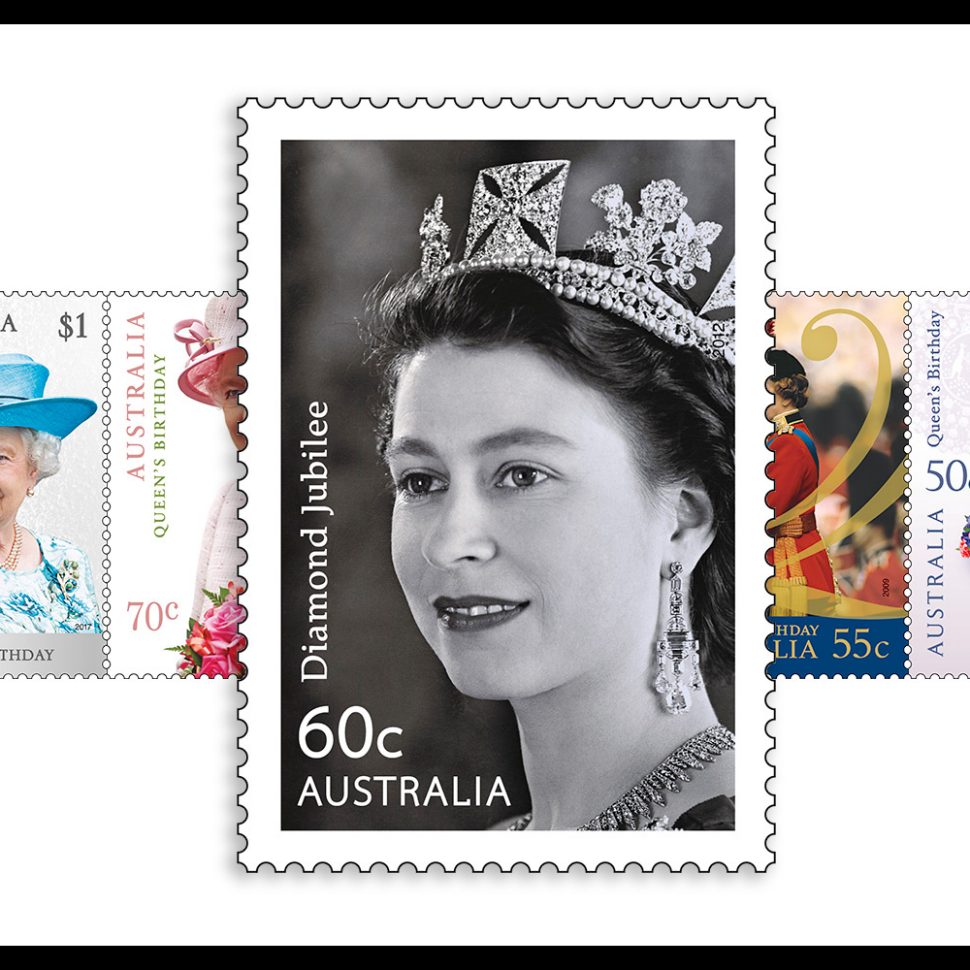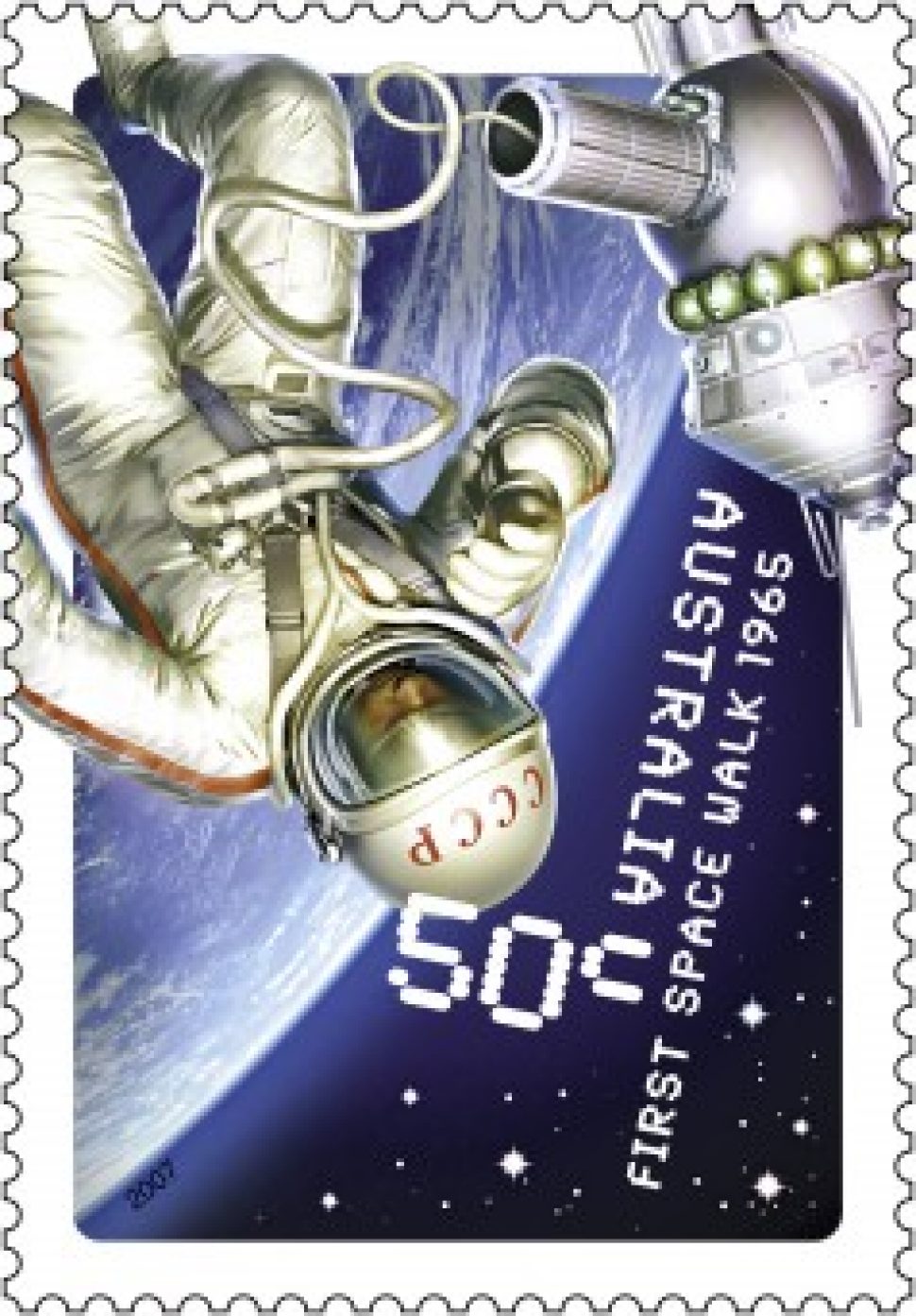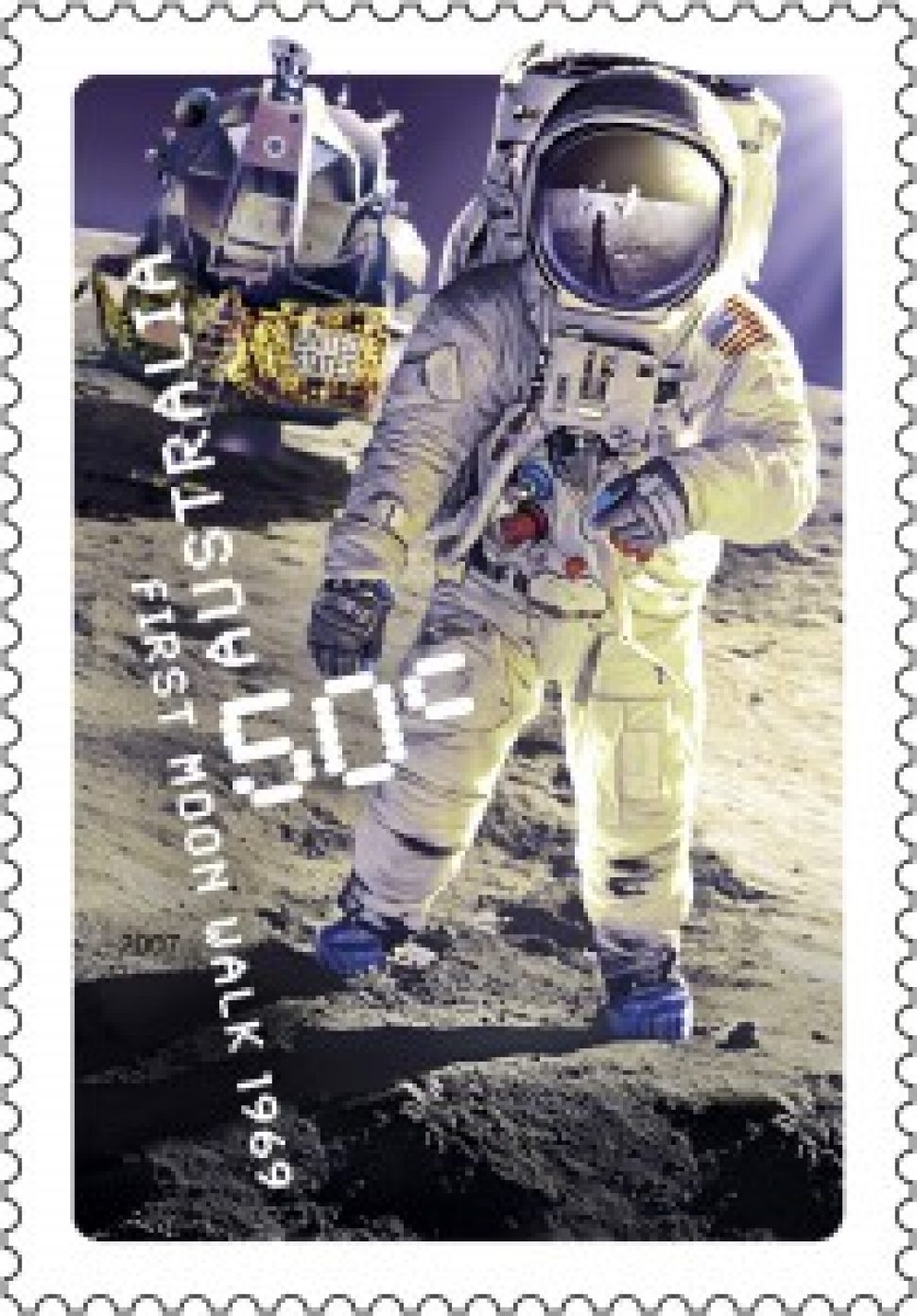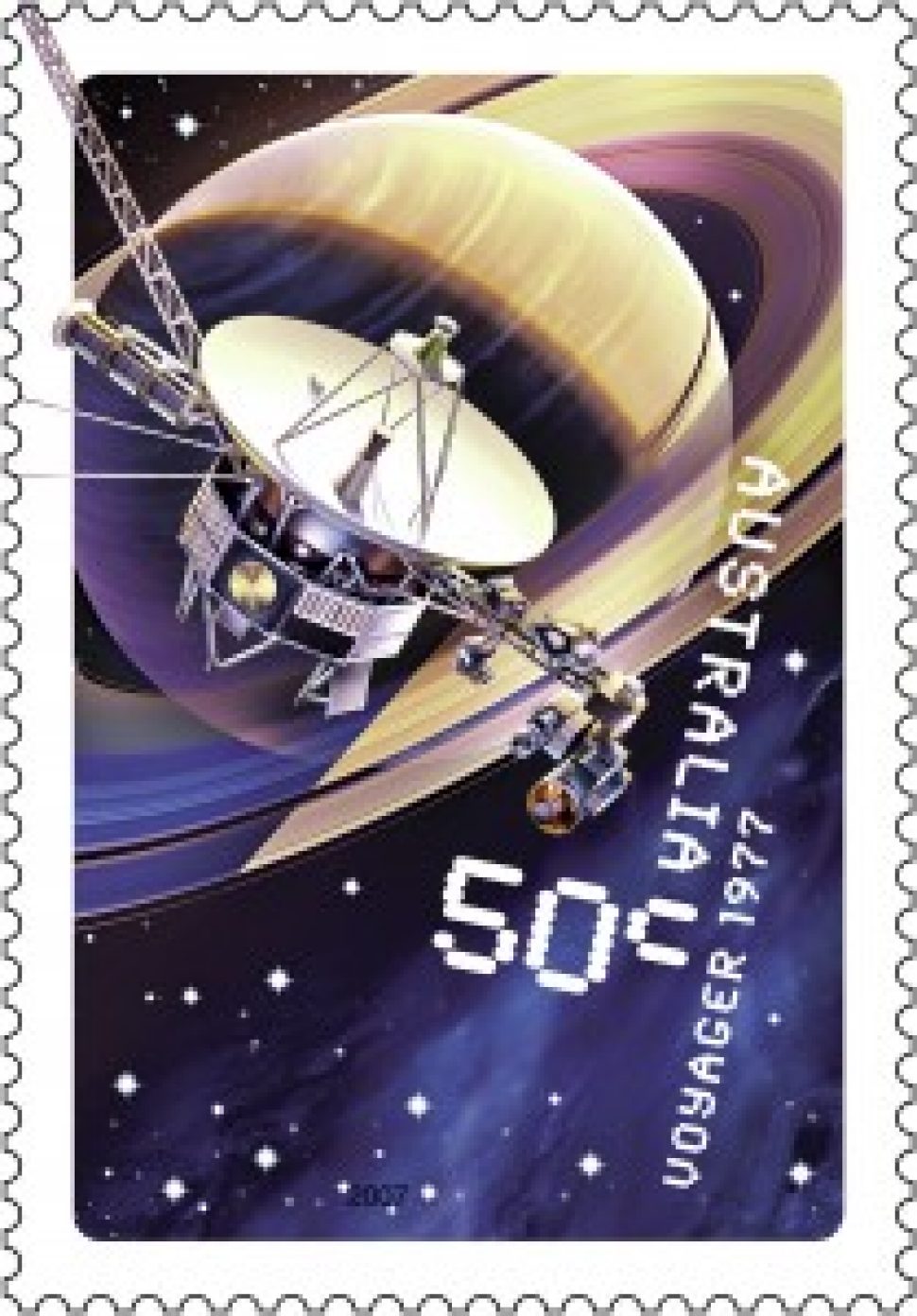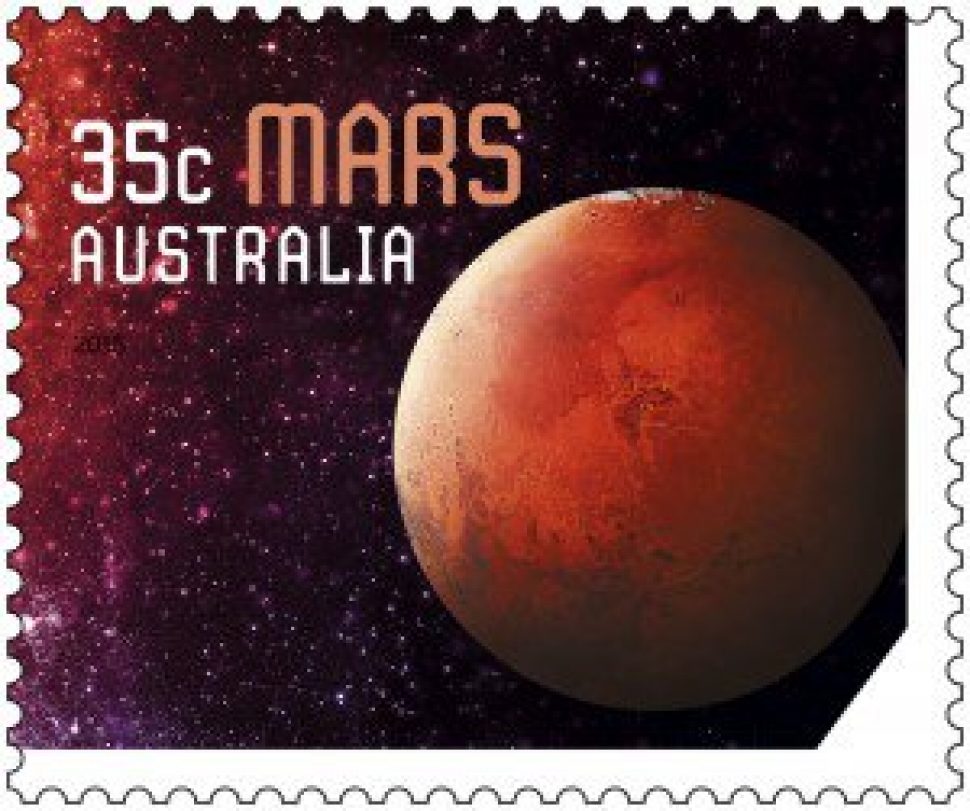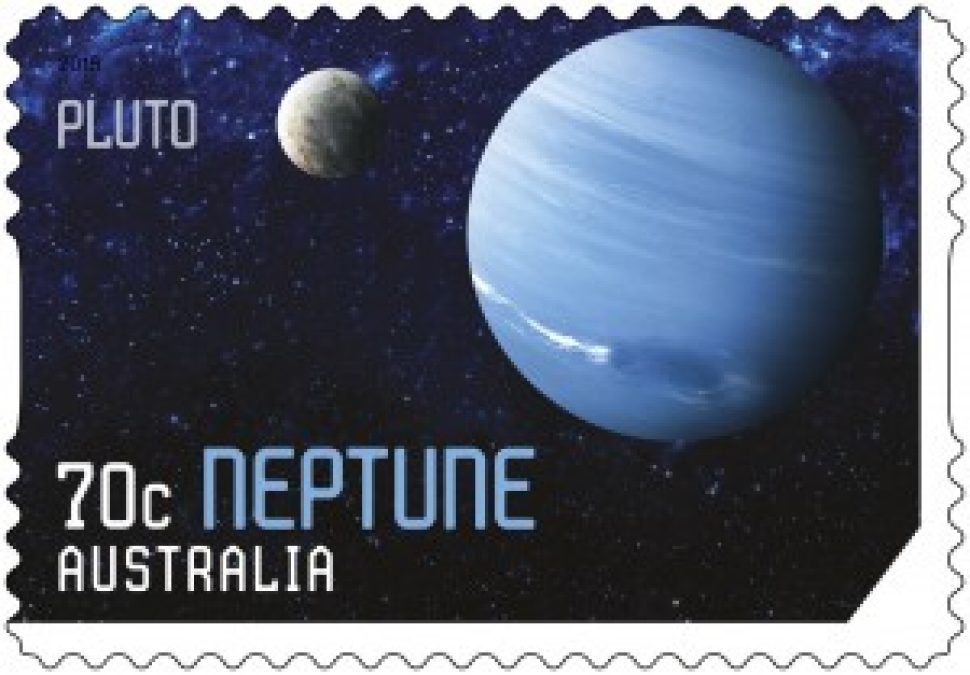In 2007, Australia Post launched its annual Stamp Collecting Month with the release of “Blast off! 50 years in Space”. The collection celebrated 50 years of space travel with the release of six stamps depicting significant events throughout the past 50 years of modern space exploration.
According to Group Manager Philatelic at the time, Noel Leahy, the launch of these stamps eight years ago was exciting as “who knows what the next half a century of space travel will hold”. How right he was!
Here we take a look back at those celebratory stamps, and recap some of the space exploration discoveries that have happened in the eight years since, which we are sure will have their own Australia Post stamps in the future.
Sputnik 1957
The launch of the Soviet satellite Sputnik 1 (“fellow traveller” or “satellite” in Russian) on 4 October 1957 is regarded as the birth of the modern space age. It was the first human-made object or satellite put into orbit around the Earth.
Sputnik I circled Earth about every 98 minutes, sending out a bleep, bleep signal.
The satellite weighed 183 pounds and contained a battery and a radio transmitter, as well as instruments to measure conditions in space, such as temperature.
The launch took the Americans by surprise and marked the start of the “space race” between the US and the USSR. The Americans had planned to launch a satellite, Vanguard, but were beaten by the Russians.
Space walk 1965
For several years the Soviets led the “space race” and on 12 April 1961 Yuri Gagarin famously became the first man in space.
The first man to step outside his spacecraft was Soviet cosmonaut Alexei Leonov on 18 March 1965. His extra vehicular activity lasted around 12 minutes. Leonov was filmed by a camera attached to the edge of the airlock and his fellow cosmonaut, Pavel Belyayev, remained inside the craft, Voskhod 2.
There were tense moments when Leonov found his spacesuit too rigid to re-enter the airlock. Leonov bled air out of his suit, but was barely able to return.
Leonov was also set to be the commander of the first Soviet Moon mission, cancelled when Apollo 11 took the prize in 1969.
Man on the moon 1969
After Gagarin’s successful orbit of the Earth in 1961, US President John F Kennedy responded by declaring that the Americans would send a man to the moon by the end of the decade.
This became a reality on 20 July 1969 with the Apollo 11 mission, when Neil Armstrong became the first man to set foot on the Moon.
Armstrong was accompanied by fellow astronaut Buzz Aldrin on the lunar module Eagle while the third member of the expedition, Michael Collins, remained on board the Apollo command module, the Columbia, as it orbited the Moon.
Read more about the astronaut Buzz Aldrin.
Space Probe Voyager 1977
The most distant human-made object in the cosmos is Voyager I, which was launched by NASA in 1977.
The probe has been traveling through the outer edge of our solar system, in an area called the heliosheath – the zone where the sun’s influence wanes. This region is the outer layer of the “bubble” surrounding the sun, and no-one knows how big this bubble actually is.
Travelling at a speed of about one million miles per day, in 2012 Voyager 1 made the historic entry into interstellar space.
The two Voyager probes have explored Jupiter, Uranus, Saturn and Neptune, along with dozens of their moons.
As at February 2015, Voyager 1 was 19.5 billion km from the sun.
International Space Station (ISS) 1998
In 1984, President Ronald Reagan proposed that the United States, in cooperation with other countries, build a permanently inhabited space station. The US forged a cooperative effort with 14 other countries (Canada, Japan, Brazil, and the European Space Agency – United Kingdom, France, Germany, Belgium, Italy, Netherlands, Denmark, Norway, Spain, Switzerland and Sweden).
In 1993, the US invited Russia to cooperate in the ISS, bringing the number of participating countries to 16. The assembly of the ISS in orbit began in 1998 and in 2011 the International Space Station was completed and is now larger than a six bedroom house.
The ISS is a microgravity laboratory, operating as a national laboratory for scientific research in which an international crew of six people live and work while travelling at a speed of five miles per second, orbiting Earth every 90 minutes.
Hubble Space Telescope (1990)
Hubble is the world’s first space-based optical telescope, orbiting the Earth once every 97 minutes at an altitude of 600 kilometres.
Launched in 1990, it is expected to have an active life of around 20 years. Hubble is powered by solar electricity, with back-up rechargeable batteries when the telescope is in the Earth’s shadow. It is 13.2 metres long with a diameter of 4.2 metres and weighs more than 11,000 kilograms.
The Hubble is able to observe our solar system and the farther reaches of space. Hubble has peered across space and time to study galaxies in an infant universe and has helped astronomers estimate the age of the universe to 12 to 14 billion years.
The most famous of Hubble’s faraway views include the Hubble Deep Field, a tiny speck of sky that revealed a zoo of about 3,000 galaxies, some as old as 10 billion years. And the identification of the farthest stellar explosion to date, a supernova that erupted 10 billion years ago.
In 2008 Hubble took the first visual image of the exoplanet Formalhaut b, and in 2012 Hubble astronomers’ uncovered seven primitive galaxies from a distant population that formed more than 13 billion years ago.
In 2014 the Hubble Space Telescope became the first telescope ever to observe an asteroid disintegrating, and revealed the most detailed weather map ever for an exoplanet. 2015 saw Hubble celebrate its 25th year in orbit.
Since 2007 …
Following these remarkable space discoveries and explorative achievements, from 2007 we have continued to witness more and more ground breaking astronomical triumphs. The better technology gets, the more opportunity we have to learn about our universe. Below are just some of the many fascinating discoveries we have been lucky enough to observe in the last eight years.
Landing on Mars, 25 May 2008
NASA’s Phoenix Mars Lander landed safely on Mars and began sending images home after a 10-month, 422 million-mile journey. Scientists later reported that during its mission Phoenix discovered the presence of water ice on the planet.
The launch of the Kepler Spacecraft – the hunt for ‘Earth’s twin’, 6 March 2009
The Delta II rocket carrying NASA’s Kepler spacecraft lifted off. Kepler was the agency’s first planet-hunting spacecraft, launched to survey our region of the Milky Way galaxy and discover hundreds of Earth-size and smaller planets in or near the habitable zone, and determine the fraction of the hundreds of billions of stars in our galaxy that might have such planets.
In December of 2011 NASA confirmed Kepler had discovered the first planet found in the habitable zone of a “sun-like” star. They named the planet Kepler-22b. The planet is about 2.5 times the radius of Earth, and orbits comfortably within the habitable zone.
Curiosity rover landed on Mars, 6 August 2012
In 2012 NASA’s Curiosity rover successfully landed on Mars. As large as a car, it carried an array of advanced new instruments and experiments.
Curiosity finds signs of life on Mars, December 2013
Sixteen months after landing Curiosity discovered signs that ancient Mars could have supported life. The team announced evidence of a freshwater Martian lake near the planet’s equator for extended periods of time. The lake likely existed about 3.7 billion years ago, far more recently than scientists previously thought habitable environments existed on the Mars.
More recently, scientists have used NASA’s Mars Reconnaissance Orbiter to determine that dark seasonal streaks near the equator could indicate the presence today of flowing salt water on Mars during the planet’s warmer months. Previous signs of existing flowing water on the planet were limited to the poles, while the equatorial regions were considered completely dry.
Discovery of ‘Earth’s Cousin’ Kepler – 186f, April 2014
In 2014 scientists announced NASA’s Kepler space telescope had found Kepler-186f, the first known Earth-size planet that resides in its star’s “habitable zone” — the range of distances that could support the existence of liquid water on a world’s surface.
The planet lies 490 light-years from Earth and is just 10 percent wider than our home world. Kepler-186f is not the elusive “Earth twin” that astronomers have long sought; the planet circles a red dwarf, a star smaller and dimmer than the sun. But Kepler-186f is a member of the family nonetheless, with its discoverers characterising it as an “Earth cousin.”
First images of Pluto seen by man, 15 July 2015
New Horizons was launched in 2006 to help understand worlds at the edge of our solar system by making the first reconnaissance of the dwarf planet Pluto and by venturing deeper into the distant, mysterious Kuiper Belt – a relic of solar system formation.
In July 2015 the first images of Pluto where sent to Earth from the interplanetary space probe. Having completed its flyby of Pluto, New Horizons will be maneuvered for a flyby of Kuiper belt object 2014 MU69.
New Horizons is expected to encounter 2014 MU69 on 1 January 2019 when it is 43.4 AU from the Sun.
This article was produced at the time of publication and will not be updated.
You might also like
